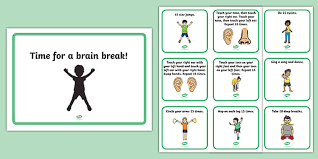Imagine a bustling elementary classroom on a crisp autumn morning. Little Emma, usually bubbling with enthusiasm, slumps over her desk, her pencil hovering aimlessly above a math problem. Across the room, her classmates fidget and whisper, their focus waning after an intense reading session. Sensing the shift, their teacher, Ms. Rodriguez, smiles knowingly and pulls out a stack of colorful sheets. “Time for a quick adventure!” she announces, distributing the pages filled with silly riddles and drawing prompts. As the children dive in, laughter fills the air, eyes brighten, and energy surges back. In just five minutes, the room transforms—ready to tackle the next lesson with renewed vigor. This simple act highlights the magic of brain break worksheets, turning moments of fatigue into opportunities for refreshment and joy.
What Are Brain Break Worksheets?
Brain break worksheets are printable activities designed to give students short, engaging pauses during learning sessions. These resources typically include puzzles, coloring pages, riddles, or quick exercises that can be completed in a few minutes, helping to reset young minds without disrupting the flow of the day.
The Evolution of Brain Breaks in Education
Originally rooted in the need to combat sedentary learning environments, brain breaks have evolved with educational research emphasizing active engagement. Today, these worksheets incorporate elements from mindfulness practices, physical movement cues, and cognitive challenges, making them versatile tools for teachers and parents alike.
Key Features of Effective Brain Break Worksheets
Effective versions are age-appropriate, easy to print, and varied in theme. For instance, they might feature seasonal motifs like fall charades or winter puzzles, ensuring they remain fresh and appealing throughout the year.
Benefits of Brain Break Worksheets
Incorporating these activities offers numerous advantages, supported by educational insights. They not only break up monotony but also contribute to overall student development.
Improving Concentration and Focus
One primary benefit is enhanced concentration. After prolonged sitting, children’s attention spans naturally dip, but a quick worksheet activity—like solving a riddle or completing a word puzzle—reinvigorates neural pathways, leading to better focus on subsequent tasks. This reset can increase productivity and help students absorb information more effectively.
Enhancing Physical and Mental Health
Many brain break worksheets encourage subtle movements, such as finger aerobics or drawing exercises, which promote blood circulation and reduce stress. On the mental health front, activities like journaling prompts allow kids to express emotions, fostering emotional regulation and positive feelings.
Boosting Creativity and Social Skills
Puzzles and creative tasks stimulate imaginative thinking, while group-oriented worksheets can encourage collaboration, building social bonds in the classroom.
Types of Brain Break Worksheets
Diversity is key to keeping things exciting. Here’s a breakdown of popular categories, each offering unique ways to recharge.
Physical Activity-Based Worksheets
These include prompts for simple exercises, like “draw yourself doing jumping jacks” or fingerprint patterns for self-regulation. They’re ideal for getting blood flowing without needing much space.
Mindfulness and Relaxation Printables
Coloring sheets or breathing exercise guides help calm high-energy groups. Mandala designs or directed drawing steps provide a soothing outlet, often paired with fun facts to educate subtly.
Puzzles and Brain Teasers
Riddles, rebus puzzles, and hink pinks challenge logic and vocabulary. For example, a worksheet might ask kids to decode a message or find rhyming pairs, suitable for grades 2 through 8.
How to Incorporate Brain Break Worksheets into Daily Routines
Integration doesn’t have to be complicated. Start by scheduling them during natural transitions, such as after a long lesson or before lunch.
Tips for Teachers and Parents
Use timers to keep breaks short—aim for 3-5 minutes. Tailor selections to the group’s energy: opt for active ones when lethargy sets in, or calming varieties for overly excited moments. Rotate themes weekly to maintain interest.
Customizing for Different Age Groups
For younger kids (toddlers to grade 3), focus on simple coloring or movement cards. Middle schoolers might enjoy logic puzzles or “Would You Rather” prompts to spark discussion.
Where to Find Free Brain Break Worksheets
Abundant resources exist online. Sites like Teachers Pay Teachers offer free fall-themed charades, while We Are Teachers provides printable coloring and drawing activities. Super Teacher Worksheets has a wealth of brain teasers, and Your Therapy Source features free fingerprint self-regulation printables. Homeschool blogs like 123 Homeschool 4 Me also offer downloadable cards via email signup.
Conclusion
Brain break worksheets serve as invaluable tools in modern education, blending fun with functionality to support young learners’ holistic growth. By weaving these quick activities into daily routines, educators and parents can create environments where focus flourishes and joy abounds. Whether through a puzzle that sparks laughter or a coloring page that soothes the soul, the impact is clear: a small break can lead to big gains in learning and well-being.








Leave a Reply